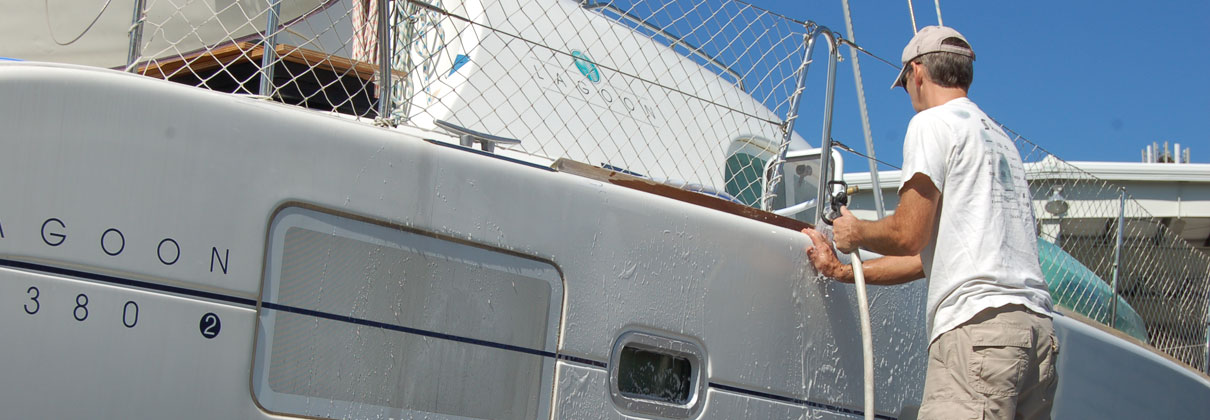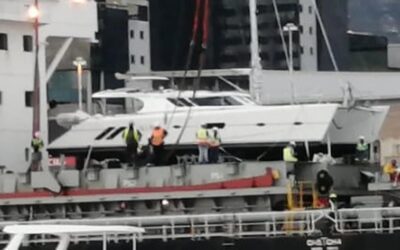
LISTING ISSUES
The boat is not priced right.
Besides experience, we have access to a list of comparable ‘currently for sale’, and ‘sold boats’ that can quickly help you address the most accurate listing price for your boat. Of course, the gear on your boat, condition etc. all play a part in the pricing of the boat, but getting an idea of what your year and model are currently selling for, finding comparatives, all aid in getting a realistic view of what to expect from your sale as well as determine, to some part, how quickly you might expect to sell your boat. Your broker can point you in the right direction, although experience has often shown us that it may take the boat not selling for six months for you to realize that the broker was perhaps correct in the listing price. Pricing your catamaran correctly from the start may save you six months of dockage rental, maintenance and cleaning fees, insurance costs etc. Do not take any brokers advice personally, but see it as the business transaction that it is.
Not budging in price.
A seller needs to be prepared to adjust the price of the boat, depending on the market, consistent offers that come in much lower than expected, reports of the boat having issues or not showing well all play into this sensitive area. Your broker should be able to guide you from the start, to prepare you for potential changes with your listing as you move forward.
Not listening to a broker’s advice during an offer.
We have seen it many times, when an initial offer is received by the seller but rejected for some reason or other, usually related to price and to issue #2 above. The boat invariably sells for less down the line. This is not always the case, of course, but oftentimes a broker will recognize when an offer is good and it is helpful to listen to them – you did choose your broker because you trust them right? So let them advise you and please listen.
The boat is dirty when we show it.
You will need to make arrangements for the boat to be cleaned on a regular basis. This is crucial for the vessel to show well.
On a similar note is the fact that a boat needs maintenance to keep it in good working order.
It is true that as soon as a boat is not being used, it ‘goes backwards’ to some degree or another. Generally, it is good for engines to be started on a regular basis. It is wise to organize some general maintenance of the vessel if you are unable to do that yourself.
The boat is full of owner’s possessions.
When a seller climbs onboard a boat, the last thing he or she wants to see are your personal belongings. It makes it difficult for people to picture themselves on your boat when they are surrounded by your ‘stuff’. Remove any and all personal items. Put them in storage if necessary. A good rule of thumb is: if you don’t want to sell it with the vessel, don’t have it onboard. This will avoid unnecessary issues down the line.
The dinghy is not registered.
If this is the case, we will make note on the specification sheet of the vessel that the ‘dinghy will not convey’ with the vessel for sale. Years ago, the dinghy would sell along with the vessel as part of the inventory of the vessel. However, when the mega yachts would do the same with their ‘tenders’ that were sometimes as long at 100’ and valued at over $100k, Florida decided that dinghies/tenders would sell as a separate vessel in any transaction. In order to do this, however, and in order to transfer title of the dinghy, it is necessary that the dinghy is a registered vessel. When registration paperwork is not available, it is important that the owner of the dinghy either:
begin proceedings to register the dinghy;
obtain an original MSO (Manufacturer’s Certificate of Origin) signed by the dealer and provide the original invoice for the dinghy;
Otherwise, it is best to remove the dinghy from the vessel altogether as to not confuse the dinghy as selling with the vessel.
Importation of the vessel.
If the vessel is foreign built it will need to be imported in order to be sold in the United States. When, you see the words “not for sale to US Citizens” it means that the vessel is a foreign built vessel that has not been imported. The only buyers allowed to be shown the vessel are non-US citizens. If you have a foreign built vessel you will need to provide proof that is has been imported either now or in the past. It is a critical little piece of paperwork to have in your boat file. Usually, if a boat is already US Registered, it means that it has been imported before, but proof of the importation is still required to show that it was previously imported.
If your vessel is foreign flagged, you will also have to import the vessel before being able to offer it for sale to US Citizens.
The owner is overseas and has difficulty in getting the necessary Bills of Sale signed timeously or with the necessary US Notaries.
It is important to provide your broker with a Power of Attorney before travelling aboard to avoid issues for when your boat sells.
All these issues which, if addressed correctly at the time of listing, will allow for a smooth sale for all involved.



